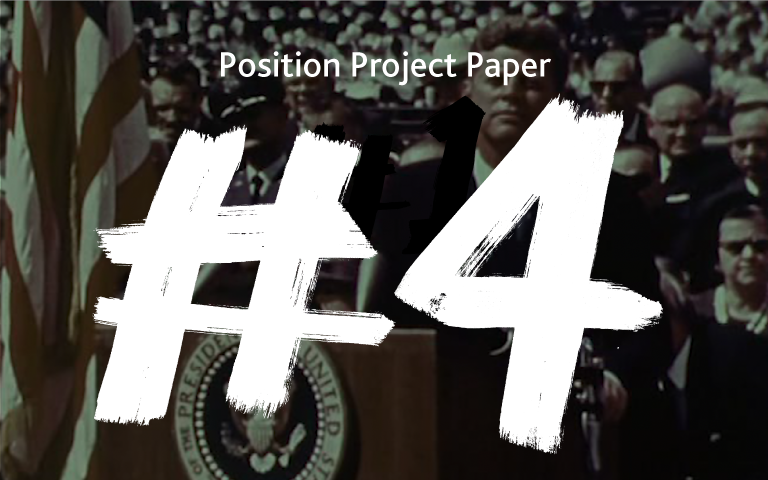Position (it's the thing)
This article was originally written for the Data & Marketing Association.
Finding the few levers that drive marketing effectiveness has always been crucial, but it’s harder than ever. The digital era has led to a proliferation of channels, platforms, and tactics. The rapid pace of change makes it near impossible to keep up with all the latest developments, let alone make sense of it all and formulate clear strategies. The way to avoid drowning in incremental improvements is to focus on first principles.
Brand perception is a core driver of growth and profit. This isn’t about logos. A brand is the impression people have of a business, product, cause, individual, or any other entity. People’s awareness of the brand’s existence, and the thoughts and feelings they associate with it, will determine whether they ultimately choose it. People don’t have the time or the inclination to remember much about a brand, so their image of it needs to be carefully curated.
The way people perceive a brand stems from its position. When a brand clearly defines where it sits in the world and what it stands for, it allows a coherent image to weave like a narrative across every interaction, from advertising and websites to packaging and retail experiences. If everything people see and hear is coherent, then the brand will establish a position. The brand will become differentiated and will have competitive advantage. It will garner loyalty, leading to accelerated growth and superior profits. But achieving this is easier said than done.
Hiscox is a topical example of how a position can be undermined. Before the coronavirus, they were running adverts that proclaimed: “When the unexpected happens, expect the best.” Yet their rejection of claims for business interruption during the pandemic led to negative publicity. Brands encounter issues like this when they try to create a position from the bottom up, communicating it to the world before they’ve aligned around it internally. Avoiding this requires a particular approach.
The most successful brands take positions from the inside out. They root their position in what the brand does and deeply held beliefs about why it exists. Rather than being transplanted in, the position is something that the leadership truly believes in and champions across every area of the organisation. Cirque du Soleil embody this approach.
Cirque du Soleil was founded in 1984 when the circus industry was in long-term decline. The core audience for circuses – children – were being lured away by computer games and television. Cirque du Soleil went after a different market: those who attend opera, theatre, and ballet, in particular the corporate market.
They reimagined the circus experience, creating breath-taking set designs, stunning costumes, magical lighting, and original music. Their purpose was defined as being “to reinvent the circus,” and they communicated this with a voice that stood out from the clichéd and expected approaches of a traditional circus. Within 20 years of launching, Cirque du Soleil achieved revenues equivalent to those the market leader, Ringling Bros and Barnum & Bailey, had taken a century to reach. This example demonstrates the three critical aspects of a position.
The first component of a position is Space. This means knowing where the brand competes. It’s about clearly defining the brand’s offer and who its audience is. To communicate the offer in a compelling way, it’s vital to go beyond what the brand does. This is the second component: Purpose. This means articulating why the brand exists, its raison d’être.
The third element is Voice. Interesting, creative, and engaging ways to communicate the brand’s Purpose must be developed across a multitude of channels. This is why creatives, designers, and writers are so central to sustaining a position – it cannot just be a strategic exercise.
At Squad, we describe ourselves as a strategic consultancy meets creative agency, because of the importance of both skillsets to building brands. We help clients to find powerful positions, then drive these across every single marketing activity the brand undertakes, working alongside in-house teams and other agency partners. It’s this focus on position that makes everything else more effective, driving superior growth, profit, and value.
— RG
To read this article on the Data & Marketing Association website click here.
Click below to download your Ignition Calculator
Download
Paper #4 | The process of finding, taking and sustaining a position
A moon rocket uses half of its entire fuel supply to go the first mile. It’s this initial burst of energy that creates the propulsion for it to leave the earth’s surface. The same is true with launching a position. Time and energy must be spent on crafting something powerful enough to create lift-off. But further growth is about how its driven across and through the brand.

Paper #3 | Caution: The three blackholes of position
Newton’s first law of motion is that an object in motion will stay in constant motion until it meets an opposing or accelerating force. In its early state, momentum is delicate and easily lost. Our previous Paper explained the four engines of position, which are accelerating forces. On the flipside, there are three blackholes that can suck the energy from a position.


